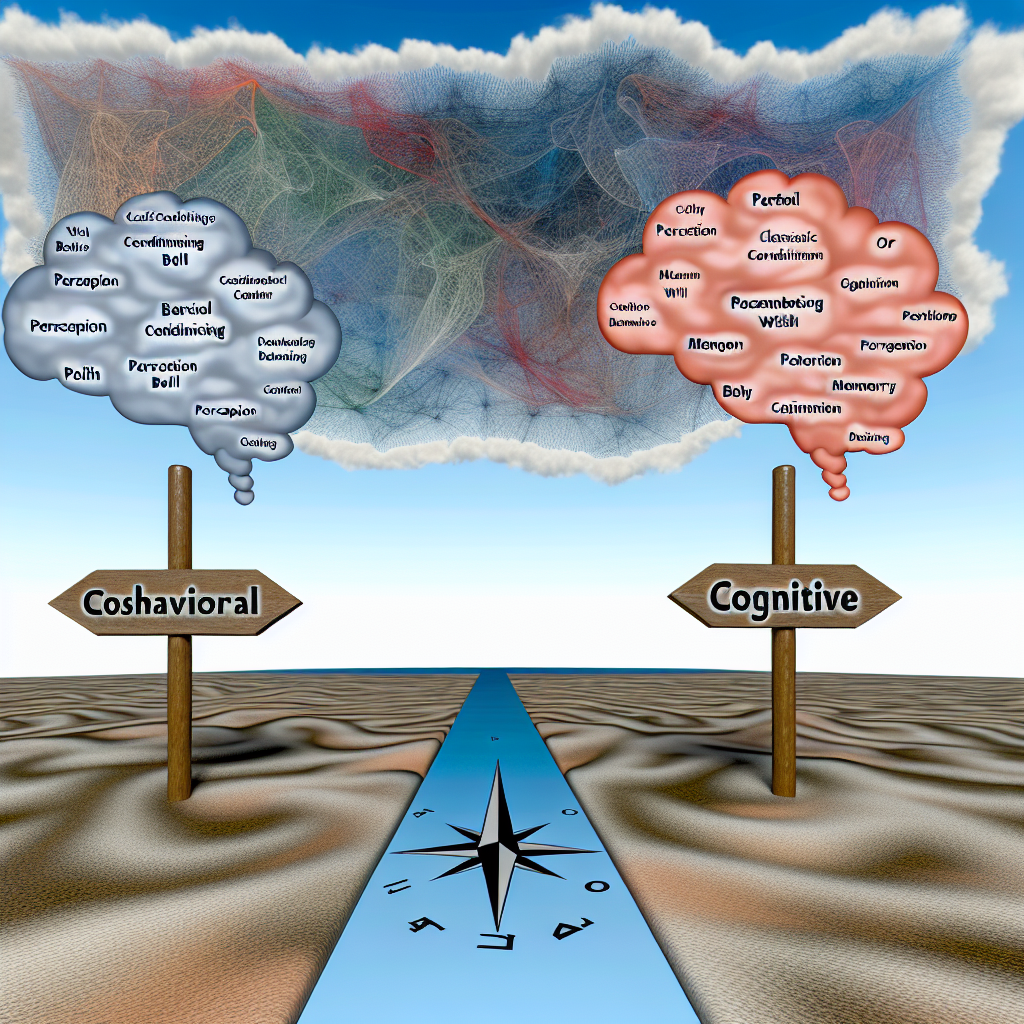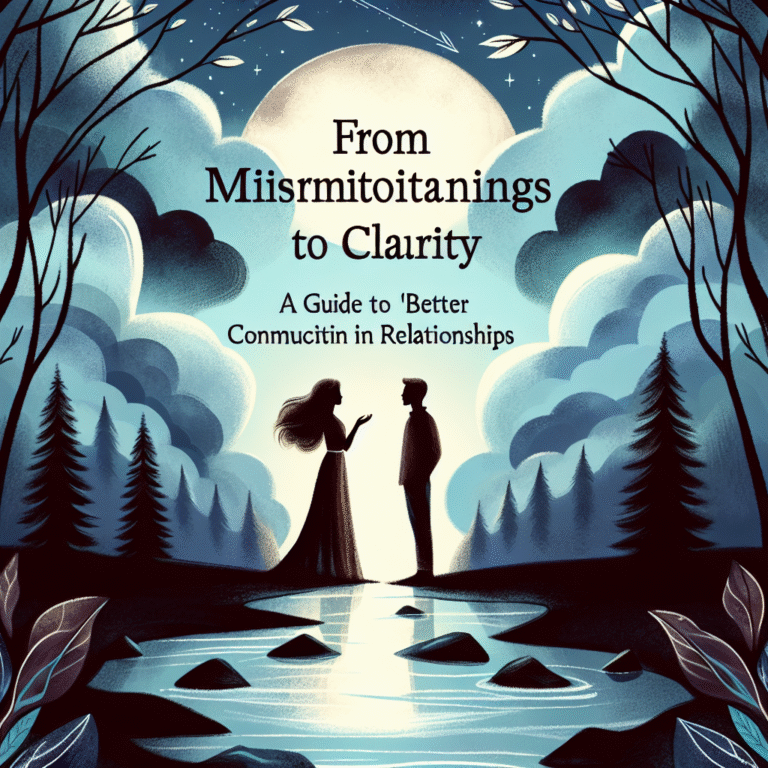
Navigating the Psychological Landscape: Behavioral vs. Cognitive Approaches
Introduction
In the vast and intricate world of psychology, understanding human behavior is a quest that spans centuries. The mental processes that drive our actions, thoughts, and emotions are often shrouded in mystery, leading to a multitude of theories and frameworks. Among these, two influential approaches—behavioral and cognitive—stand out as pillars of psychological thought. Navigating the Psychological Landscape: Behavioral vs. Cognitive Approaches is crucial not only for students and professionals but also for anyone seeking personal development or deeper insights into human nature.
With the rise of mental health awareness, these psychological frameworks have become even more relevant. Whether you’re a parent trying to understand your child, an educator looking to foster better learning, or someone simply interested in self-improvement, knowing how behavioral and cognitive approaches differ can provide a roadmap to effective strategies for change.
The Foundations of Behavioral Psychology
Behavioral psychology emerged in the early 20th century, rooted in the idea that all behaviors are learned through interaction with the environment. Pioneers like John B. Watson and B.F. Skinner emphasized observable behavior and the ways it can be modified. The following elements are fundamental to behavioral approaches:
- Conditioning: Behavioral theories largely rely on conditioning—both classical (associating a neutral stimulus with an unconditioned stimulus) and operant (reinforcing or punishing behavior) forms.
- Reinforcement: Positive or negative reinforcement can shape behavior effectively. Skinner’s experiments with rats demonstrated how reinforcement could lead to desired behaviors.
Case Study: The Use of Behavioral Techniques in Autism
One practical application of behavioral psychology is in the treatment of Autism Spectrum Disorder (ASD) through Applied Behavior Analysis (ABA). ABA uses systematic reinforcement to encourage positive behaviors and reduce undesirable behaviors. In a comprehensive study by Lovaas (1987), children receiving ABA therapy showed significant improvements in communication skills and daily living skills.
Analysis: This case exemplifies behavioral principles in action, demonstrating how understanding environmental triggers can lead to significant behavioral change in individuals with specific needs.
The Foundations of Cognitive Psychology
Cognitive psychology, which gained prominence in the 1950s and 1960s, focuses on the mental processes involved in perception, memory, and problem-solving. Thinkers like Jean Piaget and Aaron Beck paved the way for understanding how internal thoughts influence behaviors.
Key elements of cognitive psychology include:
- Cognitive Restructuring: This method involves identifying and challenging negative thought patterns to promote healthier behaviors.
- Information Processing: Cognitive psychologists view the mind as an information processor, comparable to a computer.
Case Study: Cognitive Behavioral Therapy (CBT) for Anxiety Disorders
A widely respected application of cognitive psychology is Cognitive Behavioral Therapy (CBT) for anxiety disorders. In a meta-analysis, Hofmann et al. (2012) found that CBT significantly reduces anxiety symptoms in diverse populations. Patients learn to challenge distorted thinking and gradually face their fears.
Analysis: This case underscores the power of addressing internal cognitions in fostering behavioral change and improving emotional health.
Behavioral vs. Cognitive Approaches: A Comparative Analysis
Key Differences
To understand Navigating the Psychological Landscape: Behavioral vs. Cognitive Approaches fully, one must grasp their fundamental differences:
| Aspect | Behavioral Approaches | Cognitive Approaches |
|---|---|---|
| Focus | Observable behaviors | Internal mental processes |
| Methodology | Conditioning and reinforcement | Cognitive restructuring and thought analysis |
| Primary Concerns | Modifying behaviors directly | Understanding the influence of thoughts on behaviors |
| Treatment Techniques | Positive/negative reinforcement | CBT, mindfulness, and problem-solving |
Integrating Both Approaches: A Holistic Perspective
To fully grasp Navigating the Psychological Landscape: Behavioral vs. Cognitive Approaches, consider that these two frameworks are not mutually exclusive. In fact, an integrative approach can lead to more effective outcomes. Techniques from both schools can be synthesized to address complex psychological issues.
For example, a therapist may utilize both behavioral modifications and cognitive techniques, applying reinforcement strategies while also helping clients challenge their thought distortions. This integration is most commonly seen in therapies such as Dialectical Behavior Therapy (DBT), which combines cognitive behavioral concepts with mindfulness practices.
Applications in Real Life
730-Weight Loss Programs: Programs that combine behavioral strategies (like keeping a food journal) with cognitive strategies (like addressing emotional eating) often yield better results than those solely focused on one approach.
Workplace Performance: Companies that combine behavioral incentives for performance metrics with cognitive training workshops create a more engaged and effective workforce.
Conclusion: The Path Forward
Understanding Navigating the Psychological Landscape: Behavioral vs. Cognitive Approaches offers invaluable insights into human behavior. As it becomes increasingly clear that both behavior and thought processes influence our lives, integrating the best aspects of each can empower individuals on their journey of self-discovery and personal growth.
FAQs
Q1: What are some practical applications of behavioral and cognitive approaches in everyday life?
Both approaches can be used in various settings—from therapy and education to workplace training. Behavioral strategies might be utilized in setting goals or establishing routines, while cognitive approaches can help in overcoming negative thinking patterns.
Q2: Can you provide an example of a successful integration of both approaches?
Certainly! A practical example is in the treatment of depression where a therapist might use behavioral activation (a behavioral technique), encouraging the patient to engage in positive activities, while also incorporating cognitive techniques to challenge negative thoughts.
Q3: Which approach is better for anxiety: behavioral or cognitive?
While both approaches are effective, Cognitive Behavioral Therapy is particularly renowned for treating anxiety as it combines both methods, addressing thought patterns and behaviors simultaneously.
Q4: How does one determine which approach to use for a specific psychological issue?
The choice often depends on the individual’s needs, the nature of the issue, and sometimes a combination of the two approaches provides the most tailored and effective treatment.
Q5: Are behavioral and cognitive approaches effective on their own?
Yes, each approach can be effective independently. However, an integrative approach that combines elements from both may offer more comprehensive results depending on the individual context.
In summary, Navigating the Psychological Landscape: Behavioral vs. Cognitive Approaches requires understanding not only their historical context and theoretical differences but also how they can be practically applied and integrated to enhance mental health and well-being. Embracing both ensures a thorough exploration of the human psyche, leading to more effective psychological interventions and personal development strategies.













